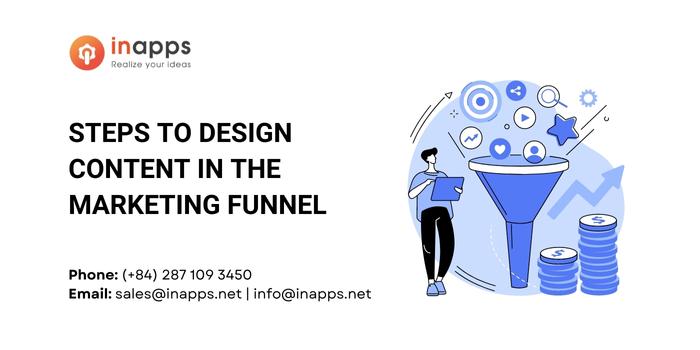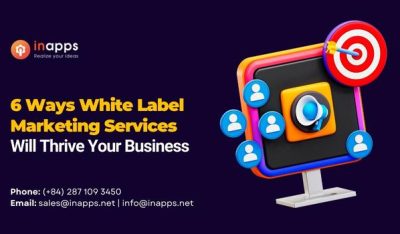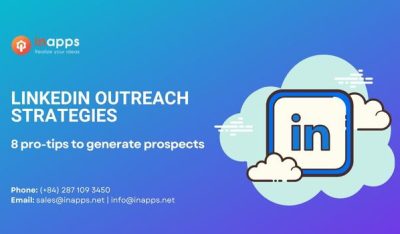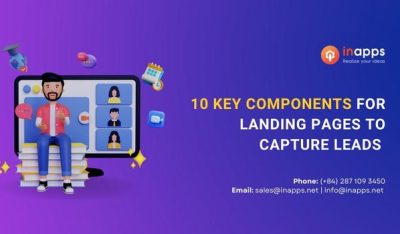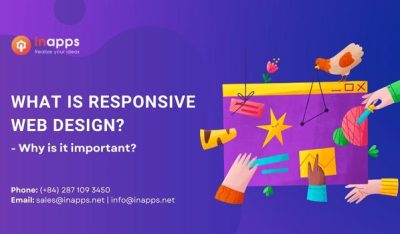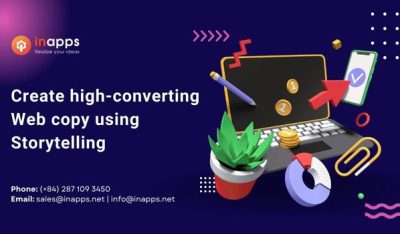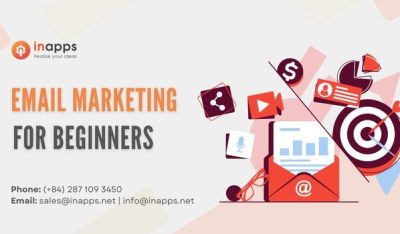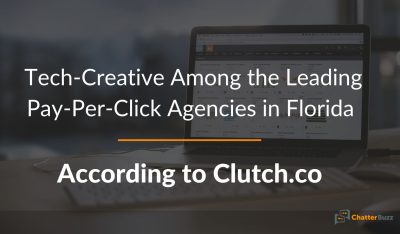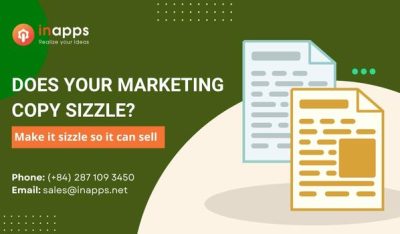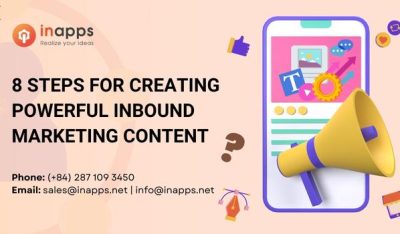- Home
- >
- Inbound Marketing
- >
- 5 Steps to design successful content in the Marketing Funnel
5 Steps to Designing Successful Content in the Marketing Funnel is an article sent to you by the InApps editorial team. Hope readers will have more useful knowledge at www.inapps.net
Do you ever feel like you are making great content but aren’t getting conversions?
This might be because you are not creating content that addresses your visitors’ needs at their stage of the customer journey.
In order to make sure your content is resonating with your audience, you need to understand what type of content belongs in each stage of the marketing funnel.
What Is the Funnel?
You may be wondering, what is a marketing funnel? A conversion funnel shows the rate at which users complete each step of a user journey to reach an overall goal.
It is called a funnel because it tends to start with a large number of users at the top, and it tapers to a smaller number of people as it gets toward the bottom of the funnel (though your aim is to get it to look less tapered).

Not all users become leads, so your task is to create qualified leads that have a higher probability of buying your product.
How Does the Funnel Work?
The theory says the more people who are able to complete the conversion funnel, the more probable sales you will have.
Optimizing the correct content on each stage of the conversion funnel is critical to obtain more potential sales.
So What Is the Challenge With Conversions Today?
The thing is, selling isn’t that easy. In fact, it’s probably more difficult today as a result of the average customer’s access to information and competitor deals.
Today’s buying behaviors:
- Customers research more: The average customer engages with 3-5 pieces of content before talking to a sales rep.
- The web is the first step: 87% of shoppers now begin their search on digital channels, so having the right content is key to gaining their attention.
- Modern consumers are savvy: They’re checking multiple pieces of content across several sites before moving on from one stage of the purchase journey to the next.
So, How Do We Fix This?
Learn these 5 steps to transform your content and create qualified leads.
Step 1: Design an optimized content marketing funnel
The marketing funnel has to be designed, maintained, and optimized. It is important when creating the design that you consider how your audience will travel through the funnel and what is needed to get them to the next stage.

There are 3 main layers:
- Discovery – when a lead first discovers your brand or the product you’re selling.
- Consideration – when a qualified lead (or prospect) decides to find out whether your product or service is the right fit or not, often comparing it against others in the market.
- Purchase – when the prospect gathers the last bit of information they need before deciding to buy and finally becomes a customer.
Once you have designed your marketing funnel it is time for the next step, assigning responsibilities.
Step 2: Assign a person responsible for each layer of the funnel
This next step is essential: assign each layer its own person or team responsible. You do not want any lead to slip through the cracks along their journey and lose out on a potential customer.
There are leads that the marketing team is responsible for and leads that the sales team is responsible for, and at some point, both may be responsible.
The goal of the marketing team is to optimize the marketing funnel so it generates marketing qualified leads and to help sales to get sales qualified leads.
Know Your Leads
Leads are those people who get in contact with your brand for the first time.
There are two types of qualified leads:

- Marketing Qualified Leads (MQL) are those customers that have indicated an interest in what a brand has to offer based on marketing efforts or are otherwise more likely to become a customer than other leads.
- Sales Qualified Leads (SQL) is a prospective customer that has been researched and vetted — first by an organization’s marketing department and then by its sales team – and is deemed ready for the next stage in the sales process.
Step 3: Identify the Function of Each Layer of the Funnel

Each layer of the funnel has a different function and goal:
The upper layer task (TOF) is to create BRAND AWARENESS to GET TRAFFIC.
Here you are introducing your product or service to your audience, but they are NOT ready to buy yet!
The middle stages of the funnel (MOF) have the main goal of GENERATING MQL LEADS. Here your audience is CONSIDERING your brand or service and it’s your goal to give them information to DECIDE to buy. The audience has become a customer and is considering BUYING.
The last stages of the funnel (BOF) are designed for real customers that are actually BUYING. Don’t forget that this stage also includes RETAINING those customers for future sales, which means CLIENT NURTURING.
Step 4: Create content for each stage of the funnel
Now that you have the foundations of your marketing funnel, the next thing is to design the content for each stage.
Let’s see how to create a content mix for your stages in the funnel.
For this, we will use the advised model ATTRACT, ENGAGE, DELIGHT.
AWARENESS STAGE OF THE FUNNEL (for any visitor)
All the copy and elements of this content have to gravitate to the goal of creating AWARENESS of the service or product. Who you are, what to do, where you are, and what makes you special and unique must dominate the rhetoric of this content.
- Attract New Customers
- Ads (ad image switch examples)
- Landing Pages
- Videos
- Infographics
- Checklists
This type of content is easily consumed and doesn’t involve a large time commitment for the customer.
CONSIDERATION STAGE OF THE FUNNEL (for MQLs only)
The design elements and copy of these materials must create an EMOTIONAL CONNECTION and RESONANCE with your customers.
- Engage Customers
- Blog Posts (How-Tos or Guides)
- Social Media
- White Papers/E-books
- Case Studies
- Webinars
- Ratings & Reviews
- E-mails
At this point your audience wants more information to support their decision so creating longer content is helpful.
DECIDE STAGE OF THE FUNNEL (for SQLs only )
The design elements and copy of these materials must facilitate the use of your service or product. SQLs are convinced already of your service, your goal is to create content that facilitates the process.
- Delight Customers
- Surveys
- Special Offers
- Contests & Giveaways
- E-mails
- Social Media
This content should be used to help push the customer that last inch to make a purchase. If they already made the purchase you should create content that eases any buyer remorse and makes them feel appreciated.
Step 5: Retain Customers

The goal is to keep your marketing funnel resonating with your customers. In order to do this, you have to be creating content on a regular basis.
For that, you have to continuously measure the success of your postings to decide what to change and adapt to the situations and seasons for the market fast.
What Should You Measure on Each Step of the Funnel?
AWARENESS LAYER OF THE FUNNEL (for any visitor)
- Visitors with intent surge
- Number of targeted visitors
- Visitors with high engagement scores
CONSIDERATION STAGE OF THE FUNNEL (for MQLs only)
- Impressions
- View through visits
- Click number MQLs
- Chat conversations MQLs
- Website visits MQLs
- % of target account engagement
- % of target account NOT engaged MQLs
DECIDE STAGE OF THE FUNNEL (for SQLs only )
- Revenue won for SQLs
- Deal cycle length
- Cost per account
- The average number of sales/marketing
RETENTION STAGE OF THE FUNNEL
- Surging intent topics
- Relationship score
- Renewal rate
Navigating the Marketing Funnel
Customers nowadays are very tech SAVVY, and they conduct their own research with their own resources and purchase when they are ready.
The challenge for the brands is to tailor marketing funnels that are in harmony with their browsing habits, emotions, and needs while also giving them space to make their decisions and the flexibility to buy at their own pace.
The goal of a marketing funnel is to convert people to your brand, generate word-of-mouth marketing to allow brand loyalists to promote your service, and create a presence in the market, and a way to satisfy that market, and not only to create sales.
Finally, I want to stress the importance of knowing your customers. Your permanent challenge is to find what content resonates with your customers and increase your brand awareness, allowing more potential sales down the line.
Follow this to make sure you’ve got 5 Steps to Designing Successful Content in the Marketing Funnel. Save and share with those around you these extras.
To learn more about Inbound Marketing
Contact us:
www.inapps.net
Let’s create the next big thing together!
Coming together is a beginning. Keeping together is progress. Working together is success.




